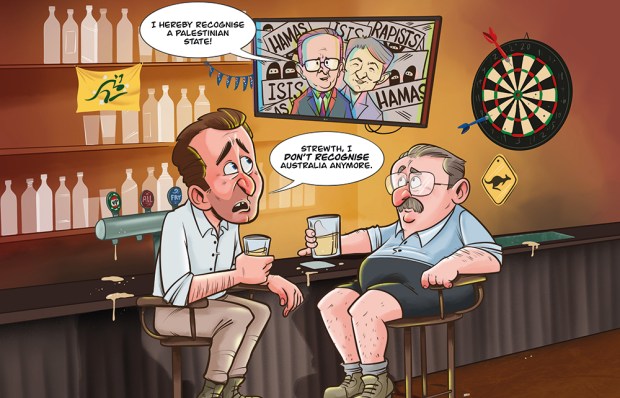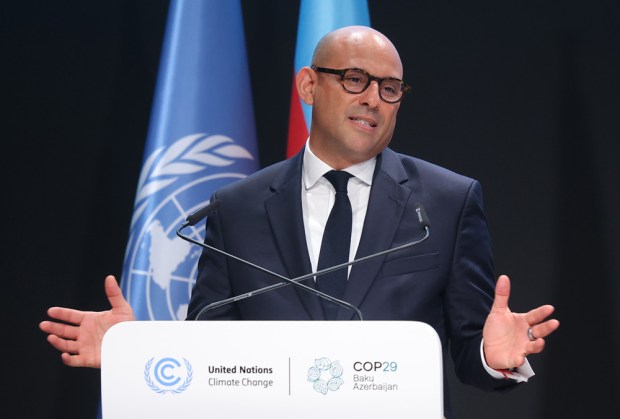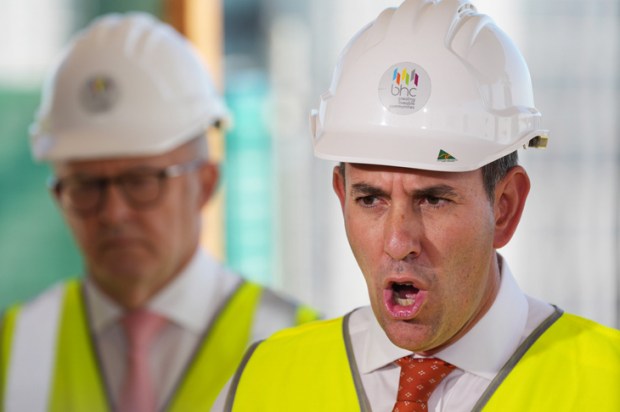The decision by the Albanese government to employ former Liberal New South Wales treasurer Matt Kean to sell its renewables boondoggle sits alongside various three-eyed memes and silly The Simpsons cartoons as an example of Labor’s lack of fresh ideas to bring to the energy debate. It is now clear that ALP strategists were content to rely on the power of a massive Nimby scare campaign (‘Where will the nuclear power plants be located?’) to be of sufficient concern to enough voters to torpedo Peter Dutton’s nuclear energy policy, and thus his potential prime ministership. To be sure, for decades this has been the get-out-of-jail card for opponents of nuclear energy in this country, driven mainly by the previous scientific reality that the only place a nuclear power plant could operate was alongside one of our beautiful waterways. The idea that Pittwater or Jervis Bay or the Margaret River would host a potential Chernobyl or Three Mile Island was enough to put the fear of God into sufficient numbers of voters to ensure no politician dared head down the uranium-plated road.
That changed a year or so ago when South Australia’s Labor Premier Peter Malinauskus cautiously began flirting with the idea of his investment-starved state taking advantage of two of its most potentially lucrative natural attributes – isolation and isotopes. This approach dovetailed neatly with the irrefutable fact that the bizarre logic of Aukus – that nuclear submarines cruising our coastlines and sitting in our city harbours were hunky-dory but nuclear power itself was an existential threat – was never going to last. (Kudos indeed to former prime minister Scott Morrison for embracing the nuclear submarine option over his predecessor’s flawed idea of buying French nuclear submarines and then retro-fitting them with outdated diesel motors.) Thus, incrementally, the reality on the ground, and in the water, made opposition to an Australian nuclear industry increasingly hard to maintain on anything other than purely ideological grounds.
Of course, the great irony of the nuclear debate, as highlighted by this magazine’s chairman Andrew Neil on his British TV show when he interviewed an Extinction Rebellion activist, Ms Zion Lights, and pointed out to her that nuclear energy has no carbon emissions, is that anyone who genuinely cares about cutting emissions must embrace nuclear energy. (Following her encounter with Mr Neil, Ms Lights went on to become a staunch pro-nuclear activist). Equally entertaining is the fact that many in Labor are, behind closed doors, strong advocates of nuclear energy. Current Labor MP for Parramatta Andrew Charlton (a former golden child of the Rudd-Gillard years) went so far as to write a lengthy Quarterly Essay many years ago attacking those who demonised nuclear energy, and more famously, former Labor prime minister Bob Hawke used one of his final appearances to urge the hippy crowds at a folk festival to embrace nuclear technology as the best way to tackle global warming. Both those examples also serve to emphasise how devoid the current Labor government is of any bright sparks or original thinkers among its ranks. When, as is increasingly likely, the Coalition wins the next election, or at the very least denies Labor its majority, there will be plenty of Labor politicians meeting in dark corners to mutter profanities about the stupidity of backing Labor’s accident-prone Chris Bowen in his absolutist climate crusade; the man who has helped to sink more than one Labor leader’s lofty ambitions.
As for the peculiar choice of Matt Kean to front the Climate Change Authority, thus putting him in direct opposition to the federal Liberal party, what can one say? For those residents of states outside New South Wales and unfamiliar with him, Mr Kean was the hapless Liberal ‘moderate’ who rose to become deputy premier and treasurer of our ‘premier’ state under the disappointing leadership of Dominic Perrottet. It was Mr Kean’s flamboyantly green policies and woke politics that helped consign that benighted government to the dustbin of history.
It is unlikely that Mr Kean in his new role will manage to convert any undecided voters to back the Albanese-Bowen renewables-only approach, but it is a dead cert that he will cement in most Liberal voters who may have been wavering about the benefits of nuclear power into now supporting it. In short, Mr Kean’s unpopularity with the mainstream is a far more potent political force than his imagined popularity with the bedwetters.
Which bring us to the Teals, those fragrant playthings of the renewables investment lobby. Former prime minister John Howard is correct in his assessment that their moment has now passed. The success of the Teals at the last election was due to the lie that these leafy-electorate candidates were somehow conservatives who cared about climate change, a silly notion that nonetheless appealed to many in the chattering classes. The Teal electorates are universally wealthy, and it is more than likely that many of those who voted Teal last time around will now appreciate that all they did was facilitate a Labor government that has wreaked havoc on the economy. Returning to the Coalition fold will not be all that difficult for them.
Got something to add? Join the discussion and comment below.
You might disagree with half of it, but you’ll enjoy reading all of it. Try your first month for free, then just $2 a week for the remainder of your first year.













